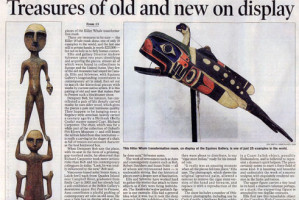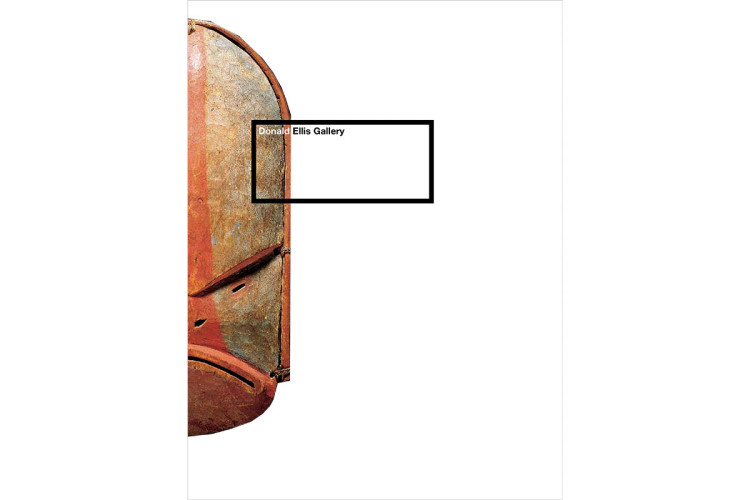
An Extraordinary Exhibition of Northwest Coast Treasures
A featured article in the Vancouver Sun praises Past to Present, an exhibition in collaboration with Equinox Gallery, as ‘a stupendous show of museum-grade Northwest Coast art’
late 19th century
2 side fins: 15 1/2"
top dorsal fin: 20 1/4"
wood, paint, metal, hide, cotton cord
height: (to top articulated eagle head) 16"
width: (to end articulated tail) 48"
length: 11 ¼"
Inventory # CN3250
Sold
sections of over paint removed, minor retouching of green & blue pigments, cotton cordage replaced
Reportedly field collected at Alert Bay in the 1930's
Kennedy Family Collection, Los Angeles, CA
Howard Roloff, Victoria, BC
William Greenspan, New York, NY
Donald Ellis Gallery, Dundas, ON
Private collection, Toronto, ON
Los Angeles City Museum, Los Angeles, CA
Donald Ellis Gallery catalogue, 2005, pgs. 4-5
The Brooklyn Museum, no. 08.491.8901 - See: Objects of Myth and Memory: American Indian Art at the Brooklyn Museum. Fane, Diane, Jacknis, Ira, Breen, Lisa M. Seattle: University of Washington Press, 1991, pl. 287
Museum of Anthropology, University of British Columbia, Nos. A6316, A4506 - See: Art of The Kwakiutl, Hawthorn, University of WA Press, 1967, pl. XVII
American Museum of Natural History, No. 16/8390 - See: Chiefly Feasts, Jonaitis, University of Washington Press, 1991, pl. 6.4
Complex articulated masks from the Kwakwaka'wakw are more numerous than from any other Northwest Coast group. They range from transformation masks that changed from one outward appearance to another, to large figures of whales and sea monsters made of many separate parts. Some articulated masks were made to be worn on the face, while others were so large that they were worn on the dancer’s back. This whale mask, at four feet in length, is among the most significant examples of this type.
With the mask poised on his back, the dancer would be able to see through the mouth of the creature. The whale’s body would rest along the wearer’s spine as he bent from the waist, moving about the performance house in a crouch, mimicking the animal’s movements and the rolling waves of the sea. The animated mask illustrated here features movable hinged pectoral fins, dorsal fin, tail and lower jaw. A small eagle’s head is situated at the location of the whale’s blowhole, pivoting from within the whale’s head when the dorsal fin is lowered, as seen here.
This impressive complex mask cannot help but inspire awe and appreciation for the skill of the Kwakwaka'wakw artist that created this elaborate imitation of a living being.

A featured article in the Vancouver Sun praises Past to Present, an exhibition in collaboration with Equinox Gallery, as ‘a stupendous show of museum-grade Northwest Coast art’

Out of print